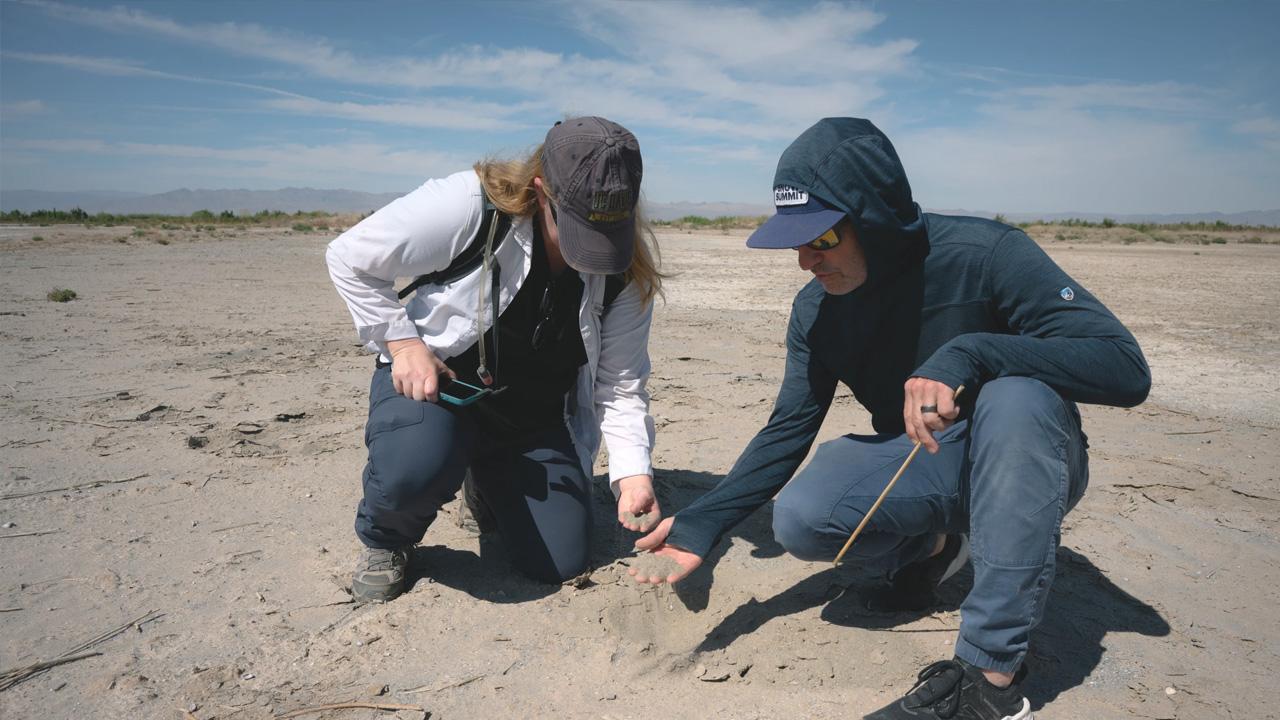
The race to understand the Salton Sea’s dust storms
Many Imperial Valley residents have grown weary of repeated public health studies around the Salton Sea. One group of scientists is trying to focus on solutions instead.
Amato Evan was in the desert when the dust storm arrived.
Evan was near Ocotillo Wells, in the western foothills of the Imperial Valley. The winds approached from the West as the sun was setting, stirring up the powdery soil. Suddenly, the dust was all around them. Evan tried to keep an eye on the ground, but he could barely see where he was going. His heart raced.
Evan had prepared for this moment. As a professor of atmospheric sciences at UC San Diego's Scripps Institution of Oceanography, he researches the physics of dust storms for a living. He’d traveled to the Imperial Valley in mid-May to study the storm’s activity. Even still, he was nervous.
“The visibility was so bad,” Evan recalled in an interview with KPBS later that week. “I’m like, 'Oh man … I might just have to stop and wait a couple hours.'”
At least eight major dust storms have erupted in the Imperial Valley and the neighboring Coachella Valley since the turn of the century, according to the National Oceanic and Atmospheric Administration. Half of those storms have taken place in just the last five years.
The events, also known as haboobs, can make travel hazardous and cause accidents or leave people stranded in remote areas. They can also carry harmful particles that burrow deep into the lungs.
For more than a decade, scientists like Evan have been trying to better understand the health impacts of these storms. Researchers have examined the density of particles in the air, asthma rates in nearby towns and increased strain on the region’s fragile health care system.
But many Imperial Valley residents have grown weary of studies that all seem to reach basically the same conclusion — that the impacts of dust storms are bad and getting worse. Instead, some advocates have urged researchers to look beyond merely diagnosing problems and develop projects that could make a material difference on what it means to live and work in the Valley.
“We’re a petri dish for studies,” said Luis Olmedo, the executive director of the environmental justice group Comite Civico del Valle, in a recent interview. “But how much of that has gone to solve our problems?”
Evan hopes to answer that call. He leads a statewide team of scientists across the University of California system focused on creating a new tool: an early warning system that could alert people before dust storms happen.
“The ideal scenario is that people that live in these areas can wake up in the morning and look on their phone and find out, ‘Is there going to be a dust storm today?’” Evan said. “That would be my vision for what I think would be something useful.”
“I think this is a good opportunity to sort of reset,” he said. “We embrace and we welcome researchers, but please understand how we've been promised and how we've been neglected.”
Read full article with audio included @
https://www.kpbs.org/news/environment/2025/09/24/the-race-to-understand-the-salton-seas-dust-storms
